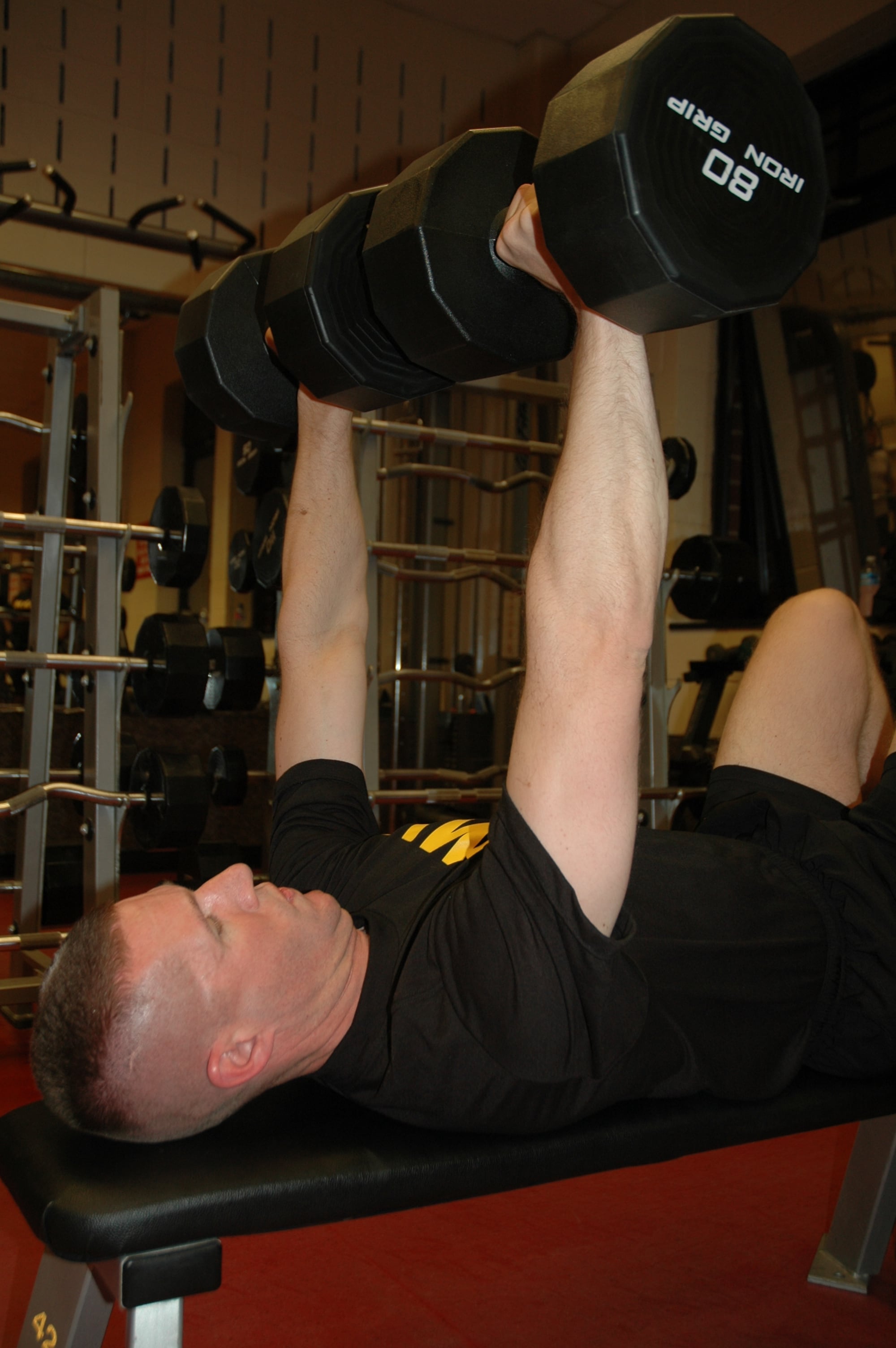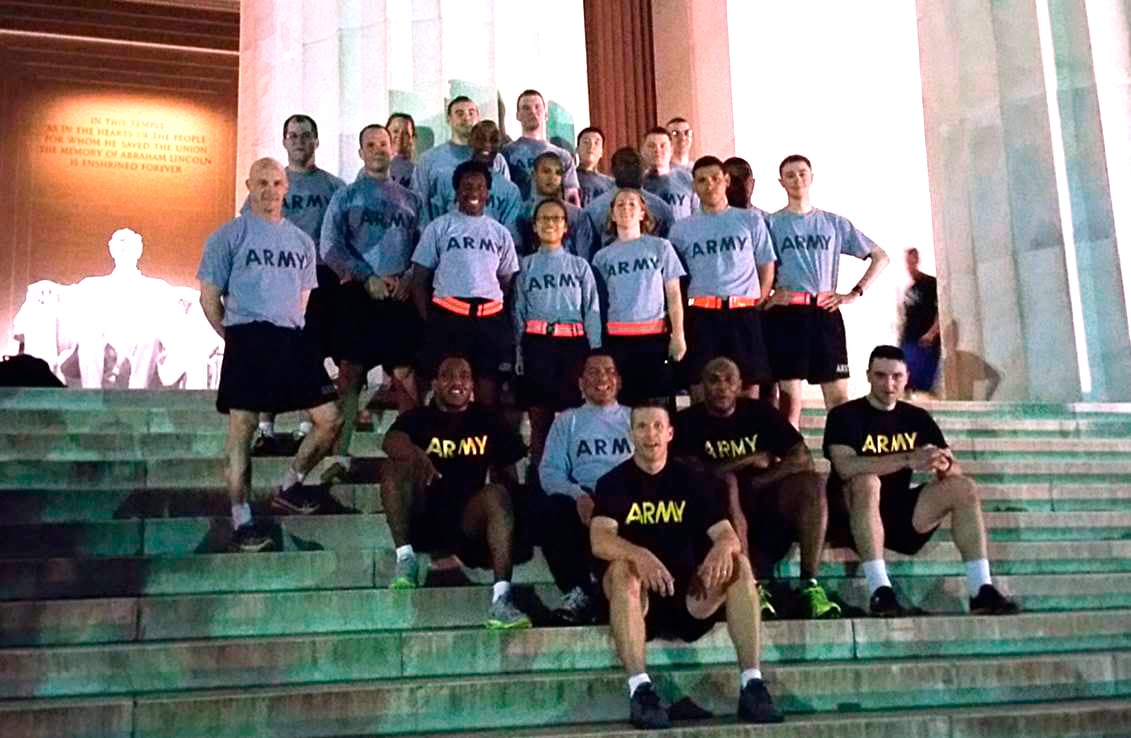For Sergeant Major of the Army Dan Dailey, PT time is special.
But Dailey, who was sworn in Jan. 30 as the Army's top enlisted soldier, doesn't just work out for fun. He views his three runs each week, along with a tough regimen of upper body and core strength-building exercises, as a critical part of his routine and life as a soldier — and he's trying to spread that enthusiasm across the force.
"I just want soldiers out there doing good PT, working hard every day," he said. "It's critically important for them to be physically fit, not just as soldiers but for the rest of their lives. Extend your life. Do some physical fitness."
Dailey has previously called to task leaders for allowing fitness standards to slide among their troops.
"One of the most important things that we do every day is typically one of the first things that we do each morning, that being physical fitness training," Dailey wrote in a March 30 letter to the force. "Yet as I travel to various locations across the Army, I find fewer and fewer soldiers actually conducting physical training."
Dailey said he knows it can be easier said than done, but physically fit soldiers are healthier over time, and they're ready for any mission they might be called upon to do.
"There are a million things out there that will compete with that hour [of PT]," he said. "It's the sacred hour, and you've got to preserve it."
The SMA workout
Dailey formed his PT routine over years of training and learning what works best for him. He noted that it's not for everyone, and nor is he advocating for it to be.

Dailey's workout regimen includes exercises to strengthen his upper body and core.
Photo Credit: Master Sgt. Michelle Johnson/Army
The regimen includes a lot of focus on upper body and core strength because of his job as an infantryman, Dailey said.
"It's extremely difficult when you're in combat when you have to pull yourself up a window or over a wall," he said. "You've got to be prepared to do that."
He also puts a keen focus on cardiovascular fitness.
"You need to have that burst of energy to sprint 100 yards, but you also have to be able to go the distance for 12- to 18-hour patrols," he said.
Dailey's last two-mile run took him a mere 11 minutes and 40 seconds, but he typically runs at least five to seven miles during PT, averaging between 7 and 7-1/2 minutes per mile. He also uses a lot of free weights, and he has a Bowflex at home, but Dailey said he likes to keep it simple.
An important part of physical fitness is knowing your body and what you need it to do, Dailey said.
"Units need to design PT plans based on their mission, based on the physical capabilities of their soldiers," he said. "This is my goal workout, but it shouldn't be the thing everybody copies."
Dailey always works out with one or more soldiers, sticking to a simple but tough PT plan. Here's a look at his typical PT routine.
Monday
Five- to seven-mile run, outside, rain or shine.
Tuesday
He does four sets of the following combination of upper body and core exercises:
For the upper body: 10 reps of free weight dumbbell bench presses and dumbbell curls.
For the core: 100 crunches on an exercise ball, followed by 150 crunches on the ball or floor. He follows those up with two sets of 75 sit-ups.
After the four sets he he finishes with 15 tricep dips followed by bicep burnouts, where you run dumbbell curls as fast as you can until you reach muscle failure. The target is 30 reps on each side. He repeats this four times as well.
Wednesday
Five- to seven-mile run, outside, rain or shine.
Thursday
A pull-up-pushup ladder and sit-ups.
This entails:
One pull-up followed by five pushups.
Two pull-ups followed by 10 pushups.
Three pull-ups followed by 15 pushups.
Four pull-ups followed by 20 pushups.
Five pull-ups followed by 25 pushups.
Six pull-ups followed by 30 pushups.
Seven pull-ups followed by 35 pushups.
Eight pull-ups followed by 40 pushups, followed by 100 sit-ups or crunches and 25 left oblique and 25 right oblique crunches.
Nine pull-ups followed by 45 pushups, followed by 100 sit-ups or crunches and 25 left oblique and 25 right oblique crunches.
Ten pull-ups followed by 50 pushups, followed by 100 sit-ups or crunches and 25 left oblique and 25 right oblique crunches.
Nine pull-ups followed by 100 sit-ups or crunches and 25 left oblique and 25 right oblique crunches.
Eight pull-ups followed by 90 sit-ups or crunches.
Seven pull-ups followed by 80 sit-ups or crunches.
Six pull-ups followed by 70 sit-ups or crunches.
Five pull-ups followed by 60 sit-ups or crunches.
Four pull-ups followed by 50 sit-ups or crunches.
Three pull-ups followed by 40 sit-ups or crunches.
Two pull-ups followed by 30 sit-ups or crunches.
One pull-up followed by 20 sit-ups or crunches.
Friday
Five- to seven-mile run, outside, rain or shine.
Saturday
Rest
Sunday
Dailey takes Sundays for personal PT. What he does on Sundays could tie into his overall fitness plan, or something recreational. This could include swimming, a long run, a bike ride or playing sports.
Weight and nutrition
Dailey, who at 42 is the youngest soldier to serve as the sergeant major of the Army, has maxed out the Army's PT test for almost his entire career.
An infantryman by trade, the 5-foot-9 Dailey tries to take care of himself, watching his weight and nutrition in tandem with his PT regimen. Dailey, who quit smoking cold turkey about 15 years ago, also tries to get six or seven hours of sleep each night, which sometimes can be difficult because of the demands of his job.
Dailey weighs himself every morning — he came in at 163 pounds after his morning run on April 17 — and he likes to stay between 162 and 167 pounds.

SMA Dailey with the staff of Fort Meyer's Andrew Rader Clinic on April 15 at the Lincoln Memorial in Washington.
Photo Credit: Courtesy
Dailey also tries to stick to a low-carb, low-fat diet, "but I splurge, too," he said.
"The reason why I can have a treat here and there is because I do run a lot," Dailey said, laughing. "I'm not the best healthy eater in the world."
Dailey and his wife try to eat fish two or three times a week, and they limit their red meat intake.
"And I try to never drink my calories," he said. "Almost never in a week will I drink a calorie. It's just a thing I've done my entire adult life."
Dailey typically starts his day with hardboiled egg whites, and he'll have chicken breast and a salad for lunch. Dinner is whatever his wife, Holly, has planned, he said.
"I'm a calorie counter and carb and fat counter, too," he said. "You have to be, the older you get."
His weakness, though, is pizza from one of his favorite restaurants in his hometown of Palmerton, Pennsylvania.
"I have this hometown pizza shop that my childhood taste buds refer back to all the time," he said. "When family members come down, I make them bring frozen pizzas from that place."
'A reason to get up'
Sometimes, it's difficult to get motivated, Dailey admits.
"A lot of people might think, 'you're good at PT,'" he said. "But there's no such thing. It takes work. It's hard, hard work."
During a recent trip to observe the Best Ranger Competition, Dailey and his team arrived late in the evening at Fort Benning, Georgia. But they went to the gym and worked out for two hours anyway, from 8 to 10 p.m., before waking up at 5 a.m. to run and do stair drills.
"That stuff's important," Dailey said. "Everybody gets tired, I understand that."
For that reason alone, Dailey's goal is to do PT every morning with at least one other soldier.
"Personally, you're going to be tired, but if you always have a soldier you can't let down, it gives you that extra boost to go outside and do PT," he said. "You have a reason to get up, a reason to drive yourself out there."
During his monthly visits to the Pre-Command Course, Dailey said he encourages soon-to-be battalion commanders and command sergeants major to PT with their soldiers.
"Whenever your unit's PT time starts, if you're not at your flag pole on your installations with your soldiers, leading from the front, you can assume your soldiers aren't doing it," Dailey said. "That's all soldiers want. They want leaders out there leading soldiers."
Doing tough, realistic PT as a unit also builds camaraderie, Dailey said.
"Sometimes the toughest, most austere environment brings organizations together," he said. "I don't mean for PT to be austere, but everybody feels good after a 5K run. There's a lot of mental preparedness that this builds for the Army, too, so it's not just physical wellbeing but mental wellbeing."
Some of Dailey's former soldiers had high praise for his PT prowess.
"He'll out PT anyone," a reader named Thaddeus Cruiser recently wrote on the Army Times Facebook page. "Used to show up on a run at Carson and run platoons into the ground. Legendary."
As a brigade command sergeant major, Dailey would "join our company/platoon runs all the time," Steven Brown, another reader, wrote.
"This dude is a PT monster," Army Times reader Jake Brewer wrote. "He would come in the pool when I was on lifeguard detail and swim laps for a solid hour, hour and a half."
Michelle Tan is the editor of Army Times and Air Force Times. She has covered the military for Military Times since 2005, and has embedded with U.S. troops in Iraq, Afghanistan, Kuwait, Haiti, Gabon and the Horn of Africa.





